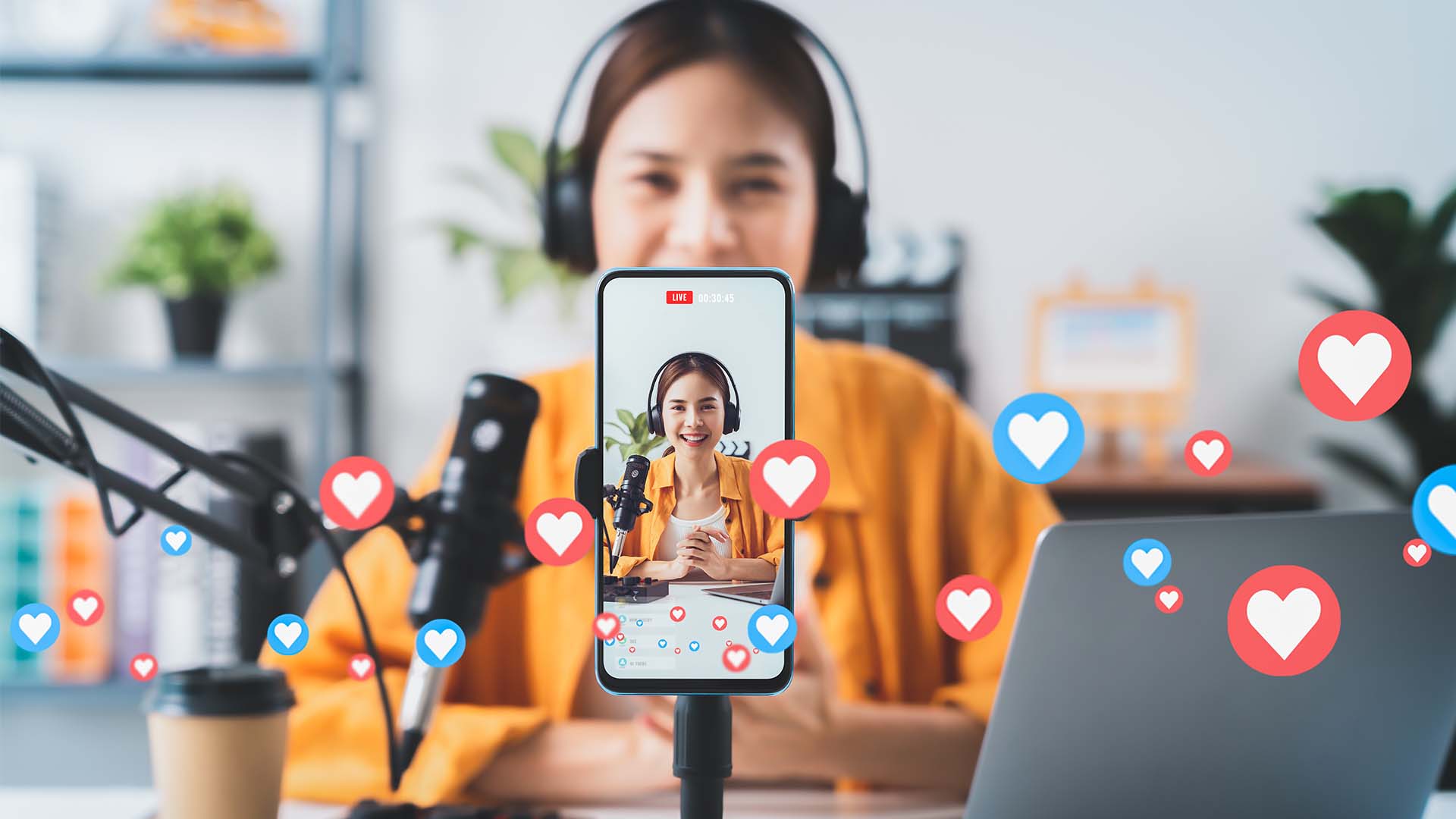What are they and how can Influencer Marketing be used to support Public Relations Strategies?
There’s no ignoring the power a good Influencer Marketing campaign can have for a travel brand.
Often sat within the Public Relations discipline, Influencer Marketing has readily become one of the best ways for brands to reach their target audiences with both Influencers and Creators offering new ways to reach a target audience in an engaging and inspiring way, the likes of which have not seen before.
With the rise in popularity of both short- and long-form video, those with a large or engaged social media following can inspire audiences to consider new destinations and can showcase travel experiences in a very different way to traditional media coverage, placements, or advertising.
However, Influencer Marketing does understandably raise some eyebrows with executives that don’t consume the majority of media through their smartphone or device. Concerns about authenticity, cost, and queries about tracking and measurement are never far away.
So what are the benefits of working with Influencers and Creators? And how can they each support travel brands in reaching new and existing audiences?
What is an influencer?
An Influencer is typically an individual with a large following – often a public figure, household name, celebrity, or person of interest in popular culture or a certain sector or niche. They can reach a large audience quickly, offering valuable exposure for travel brands.
Doing exactly what it says on the tin, Influencers offer influence. They can be used to encourage a wide mainstream audience to act based on their recommendations.
Sprout Social notes that Influencers are simply sharing how they live their lives, promoting the products and services they use along the way.
What is a creator?
Creators on the other hand are content producers. Unlike Influencers (whose content focuses primarily on exposure and is often driven be commercial arrangement), Creators prioritise the quality of their content and the storytelling that goes along with it.
Creators may not necessarily have large audiences, but their craft will be obvious in the composition and attention to detail within their content. They can often offer multiple forms of content creation, from writing to photography and videography, or a combination of all three.
While follower numbers are not the main metric when it comes to Creators, their audiences will often be highly engaged and trust their recommendations much more highly than the audience of a typical Influencer.
Creators will prioritise creating high-quality, authentic content that resonates with their audience first, while showcasing their unique perspective on a particular travel experience.
Many travel brands view Creators as a natural extension of their team, and allocate the budget to be able to use them to their advantage.
But which is right for your brand?
While the term Influencer is used pretty flippantly, it is important to know your lingo and appreciate the different benefits that working with a Creator or Influencer might offer your brand.
Content Creators might still influence their audience and Influencers are still creating content (Sprout Social), but while there are certainly similarities and cross-over between the two propositions, the intention behind the content, and the depth at which it resonates with the end consumer is where those differences start to show themselves.
There are thousands of Influencers and Creators out there to choose from, so it is important to take time to research those in your niche to ensure you are approaching ones that are a good fit for your brand, or are well-received by your target audience.
The Benefits of Collaborating with Creators for Travel Brands
For travel brands, working with Creators is an effective way to showcase the authenticity of an experience through high-quality content that resonates with your target audience.
Collaborating with Creators can also help travel brands to build a loyal community – reaching audiences that share similar values and beliefs, and in turn create consumer advocates too.
Creators also empower travel brands with content that stands out. This high-quality content is more likely to capture the attention of your target audience and has the added bonus of being highly shareable in nature due to the craft and authenticity it gives off.
Travel Brands Using Creators to Their Advantage Include…
- Airbnb: Airbnb often partner with photographers, videographers, and writers to create content that is highly sharable.
- Visit Norway: The official tourism board for Norway, has collaborated with creators to showcase the natural beauty and cultural experiences that the country has to offer. They prioritised content that both inspired and educated potential travellers.
- Contiki: This travel company has previously collaborated with creators to create content that showcases their range of tours for young adults. They have worked with social media influencers, photographers, and videographers to create content that resonates with their target audience.
The Benefits of Collaborating with Influencers for Travel Brands
While Creators bring unique value, Influencers should not be overlooked if visibility or awareness are your driving objectives.
Influencers offer a great way for brands to increase their visibility and awareness quickly. With Influencers known, followed and respected by many, they offer brands flashes of content in highly viewed spaces with a degree of credibility through public endorsement.
This can be great for travel brands looking to reach a wider mainstream market and is particularly valuable for brands that are looking to build trust with potential customers through association with well-known names and faces.
Examples of Travel Brands Collaborating with Influencers include…
- 1. Expedia: Leading online travel agency, regularly works with influencers to create content that encourages followers to book a trip. They often partner with social media influencers who have a large following and a passion for travel.
- 2. Marriott: Global hotel chain Marriott, has worked with influencers to promote their properties and destinations.
- 3. Tourism Australia: The national tourism board for Australia, has worked with influencers to promote the country as a destination. They often partner with influencers who have a strong personality and a love of adventure travel.
Does Influencer Marketing cost money?
While both Influencers and Creators may be open to gifted trips and experiences from travel brands, most will only consider work on a paid basis.
The benefits of working with both Influencers and Creators on a paid basis include:
- Ability to determine anticipated content
- Inclusion of key messaging within any content created
- Opportunity for creative input
- Reporting and measurement with statistics provided on completion of a campaign
- Provision of content to use organically or commercially, depending on the agreement
- Raising your brand profile by respecting the time and effort that goes in to creating content and paying accordingly for it
- Potential to enter into ambassador agreements
Influencers tend to charge a set fee based on the size of their audience and the type of promotion you are looking for, while Creators tend to price their services based on content packages that can include blog posts, videos, podcast episodes, static photography, copywriting, social media takeovers, and social media content.
How do I Measure the Success of Influencer Marketing?
ROI is the buzzword at any senior level with many C-suite execs and CEOs eager to nail down how PR teams will measure the success and impact of Influencer Marketing before signing off any budget for this type of activity.
Where traditional PR and Marketing offers a plethora or ways to measure success and provide results, Influencer Marketing is much more fluid, with direct impact often difficult to quantify.
I see your eyebrows are starting to raise.
Much like PR, Influencer Marketing should not be measured by any one metric and seen as a longer term activity to benefit the reputation of your brand. While both have the potential to result in immediate and shorter-term conversions, both PR and Influencer Marketing are more effective at building visibility, recognition, and trust for your brand over an elongated timeframe.
Consistency and creating multiple touchpoints in digital spaces that your target audience spends time is key.
But for the still-sceptical, here are some metrics to get you started when it comes to measurement of the success of Influencer Marketing:
- Following – use this as a guide to estimate the potential organic audience size, but remember, the algorithm can do wonders for organic content that ticks the right boxes
- Engagement – Likes, comments, shares, reposts, and reactions can all be measured numerically
- Impressions – how many people have seen the content overall can also be measured numerically
- Affiliate Links and UTMs – consider providing codes to add to the end of target URLs to help track click-through-rates from links
- Promotional Codes – why not provide discount codes that can be shared with an audience to encourage conversions
- Key Message Inclusion – how successful the content or copy reflects your key message, focus or campaign can be assessed
- Quality of Content – does this align with the aesthetic of your brand
- Sentiment – is the content and copy expressing a positive experience of your brand and do the comments show support for the content
- Web Traffic – have you received more users, longer dwell time or an uptick in conversions around the time of new content going live
- Channel follower count – has content resulted in your owned channels audience growing in size or engagement
Setting goals ahead of engaging in Influencer Marketing is important to better determine the success of your collaborations.
Start by asking yourself what impact you hope Influencer and Creator content will have for your brand, and build out your objectives and targets from there.
Should Influencer Marketing Be in my PR Plan?
To keep it simple – yes – travel brands need to be engaging in Influencer Marketing to stay relevant and reach audiences that are spending more and more of their time online.
There is clear benefit to working with both Creators and Influencers. In doing so, travel brands can grow their visibility in an already crowded sector, maximise engagement both on- and off- brand pages, inspire target audiences to take action and make conversions. All this while building credibility and showcasing your brand’s authenticity by inspiring and educating customers through content that truly resonates with them, presented to them on their most trusted digital channels.
Need help with your Influencer Marketing Strategy? Get in touch: [email protected]

